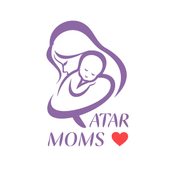One of the most beautiful moments that a mother can live and document is the appearance of the first tooth of her newborn, but this means the beginning of a difficult stage for the child and the mother together.
The teething stage is considered one of the most difficult stages that mothers go through in the maternity journey, especially new mothers, , and they may confuse the distinction between the teething symptoms and the cold or any other disease symptoms.
Therefore, in this article, we will explain the infant teething symptoms, and symptoms that are not related to teething and require a doctor’s review, and we will also provide tips that will make it easier for you and your children to pass this stage safely and with less pain.
When does infant teething begin?
infant teething begins with the appearance of the first tooth in the baby’s gums, and its date varies from one child to another and often begins at the age of six months and ends at the age of one and a half, and sometimes it may start as early as four months and may be late for the age of three years, so there is no need to worry if your child is a little late for his peers in teething.
What are the teething symptoms?
Teething is considered one of the stressful and painful stages for the mother and the child. The teething symptoms are many and annoying and cause the child to cry continuously, and the mother is upset and frustrated at her inability to help her child and relieve his pain and a constant fatigue feeling because her baby does not stop crying.
It should be noted that the infant teething symptoms may begin before the actual teeth appear during the eruption of the tooth from the gums.
The main symptoms are:
- Drooling a lot.
- Gums swelling and redness.
- Extreme discomfort and constant crying.
- The child puts anything that falls into his hand in his mouth.
- High temperature and runny nose.
- The child wanted to chew toys to rub his gums.
- The appearance of a rash around the mouth, and it occurs due to the constant drooling on the face of the child.
- Loss of appetite and a preference for fluids over food.
How do I know if a child is teething or if he is sick or has a cold?
If teething symptoms appear different or stronger than the previous symptoms, such as a severe rise in temperature, it is most likely that teething is not the cause, and here we advise you to consult a doctor to find out the reason.
It is important to note that teething may cause weak immunity because part of the saliva that increases its flow goes down to the stomach and weakens the stomach’s absorption of food, which may sometimes lead to diarrhea, and this is not a natural symptoms and it is necessary to consult a doctor.
How do I help my baby make teething symptoms Less pain and discomfort?
There are some tips that will make this stage calmer and more comfortable, Which:
First: home treatment
- Rub the baby's gums with a soft damp cloth to numb the pain in the gums.
- Focus on liquids and soups more than solid food.
- Giving the child a teething teether after placing it in the refrigerator and making sure that it is constantly clean and sterilized.
- Gently wipe the drooling from the child's face to prevent a rash.
- Cool the food provided to the child as much as possible to reduce irritation and swelling of the gums.
- Feed the baby a soft biscuit that does not crumble easily, while watching it carefully to avoid suffocation.
Second: medical treatment
- Use teething gel or pain relievers and anti-inflammatories to relieve pain according to the doctor's recommendations.
- Using a toothbrush or a dental tool for infants to distribute the gel on the gums because this contributes to its penetration more into the gums and relieves pain.
- It is possible to give the child an antipyretic if his temperature increases, but after consulting the doctor.
How can you take care of the new baby teeth?
- Before the teeth appear, the mother cleans the gums of the child with a piece of gauze moistened with water.
- Continue to clean the child's mouth and teeth with a wet gauze pad until the infant is over a year old.
- You can use the toothbrush after the age of one year, but it is worth paying attention to the use of toothpaste for children and choosing one that does not contain fluoride.
In conclusion, it may not be easy for the mother to bear her child’s constant irritability and crying during the teething stage, but we remember that it is a phase that passes quickly and becomes one of the memories.
As we mentioned to you in the article, all the tips will make it easier for you and your child at this difficult stage, and who knows! Perhaps it was one of the most beautiful phases of your life with your child!
 FREE DELIVERY FOR ORDERS ABOVE 100 QAR
FREE DELIVERY FOR ORDERS ABOVE 100 QAR DELIVERY WITHIN 3 HOURS
DELIVERY WITHIN 3 HOURS APPLE PAY AND CARD PAYMENT AVAILABLE
APPLE PAY AND CARD PAYMENT AVAILABLE



